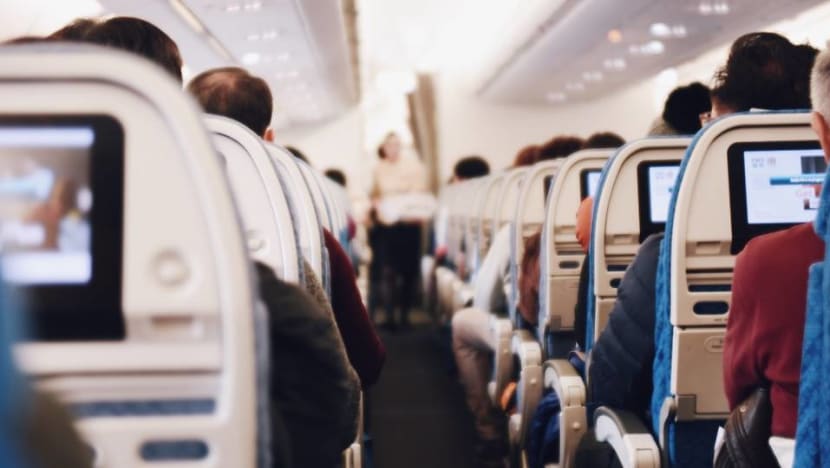How much leftover food, packaging waste do you generate when you fly?
Flights could churn out six million tonnes of cabin waste next year when passenger traffic fully recovers, enough to fill about 11,700 Olympic-sized pools.

SINGAPORE: The average airline passenger creates 1.4kg of cabin waste, which can include leftover food, plastic wrapping from blankets, or items tossed in the bins, according to estimates from the International Air Transport Association (IATA).
The airline body said flights could churn out six million tonnes of cabin waste next year, when passenger traffic is expected to fully recover from the COVID-19 pandemic.
That is enough to fill about 11,700 Olympic-sized pools.
Up to a quarter of the waste comes from untouched food and beverage.
Concerns about the aviation industry’s environmental impact – including the waste generated after each flight – are resurfacing as travel curbs are eased.
AIRLINES FIND WAYS TO REDUCE WASTE
Many airlines now allow passengers to pre-order their meals, which can help to reduce waste.
In addition, carriers such as Singapore Airlines are tapping technology to collect data and predict their customers’ consumption.
While there is a possibility of donating untouched in-flight meals, so that they do not wind up in landfills or incinerators, strict international rules make this tricky.
“Over the last 20 years, we’ve seen an expansion of international catering waste regulations for international flights all around the world,” said IATA’s assistant director of sustainability Jon Godson.
“These have been put in place primarily to protect animal health from a handful of diseases, … And this means for many areas, we cannot reuse, recycle, donate or even bio-treat the waste that’s on board.”
Meanwhile, some airlines such as Japan’s ANA are getting creative and taking things a step further, by starting in the kitchen.
“What we actually do is we bring out our food waste from the kitchen and we recycle them to fertilisers. Then, we grow soft kale from the fertiliser and bring that soft kale to our inflight meals,” said Ms Saki Ryujin, who looks after customer experience at ANA.
She added that this menu is introduced to economy class passengers.
AVIATION INDUSTRY’S FRAGMENTED SEARCH FOR ALTERNATIVES
Cutting down on packaging is also part of the solution, said observers.
But airlines noted that this is easier said than done, as the packaging is needed to keep blankets clean, food fresh, and customers happy.
Plastic alternatives could also mean tradeoffs on costs and weight.
Still, environmental groups believe the industry’s search for alternatives is slow and fragmented.
“If you get all the players to work together, they could change the system. The trouble is often the voluntary approach doesn’t always work, and sometimes you need regulation,” said sustainability veteran Marcus Gover, who leads the No Plastic Waste Initiative at Minderoo Foundation.
“Air travel is quite a regulated environment, so it might be that you need some regulation here to make a change.”
As environmental activists call for greater cooperation between regulators and airlines, IATA said it is engaging policymakers to work towards a UN treaty on plastic pollution.
Meanwhile, observers urged travellers to do their part. These include bringing their own headphones, reusing the plastics dished out on board, and even crushing recyclables, which helps airlines stow them more efficiently in galleys.




















